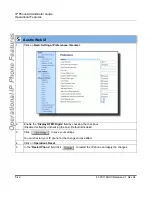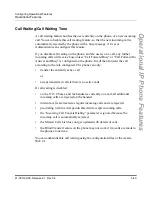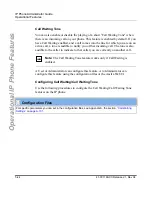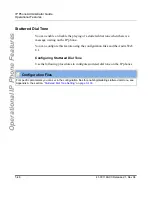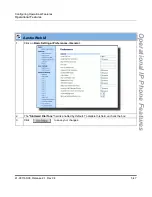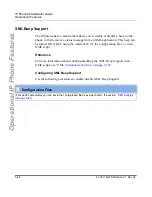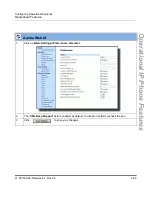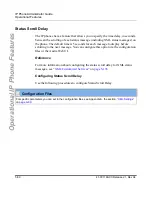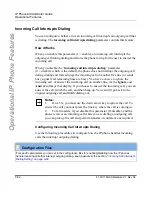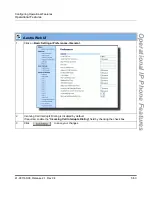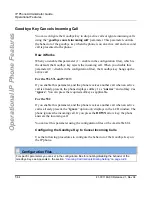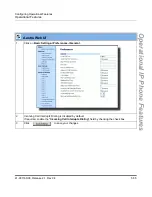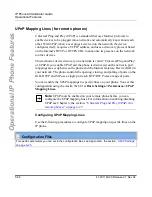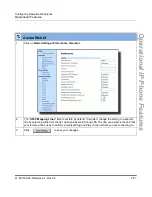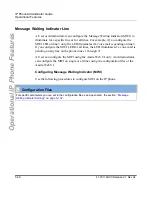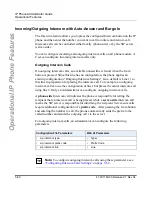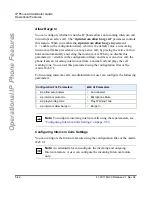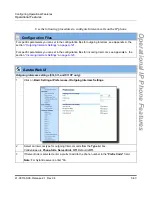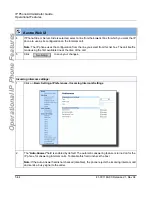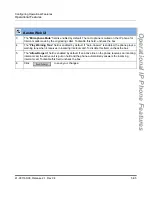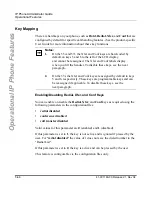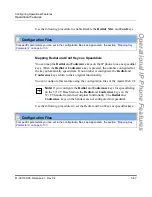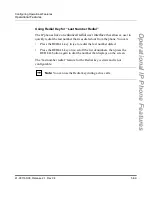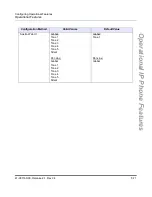
Operational Features
5-56
41-001160-00, Release 2.1, Rev 04
IP Phone Administrator Guide
Operational IP Phone Features
UPnP Mapping Lines (for remote phones)
Universal Plug and Play (UPnP) is a standard that uses Internet protocols to
enable devices to be plugged into a network and automatically know about each
other. With UPnP, when a user plugs a device into the network, the device
configures itself, acquires a TCP IP address, and uses a discovery protocol based
on the Internet's HTTP or HTTPS URL to announce its presence on the network
to other devices.
This method of device discovery on a network is called “Universal Plug and Play”
or UPnP. If you enable UPnP, and the phone is discovered on the network, port
mappings are set up between the phone and the Internet Gateway Device (IGD) in
your network. The phone controls the opening, closing, and polling of ports on the
IGD. HTTP and SIP use a single port each. RTP/RTCP uses a range of ports.
You can enable the UPnP mappings to specific lines on your phone. You set this
configuration using the Aastra Web UI at
Basic Settings->Preferences->UPnP
Mapping Lines.
Configuring UPnP Mapping Lines
Use the following procedures to configure UPnP mapping on specific lines on the
IP phone.
Note:
UPnP must be enabled on your remote phone before you can
configure the UPnP mapping lines. For information on enabling/disabling
UPnP see Chapter 4, the section,
“Universal Plug and Play (UPnP) (for
remote phones)”
on
page 4-27
.
Configuration Files
For specific parameters you can set in the configuration files, see Appendix A, the section,
“UPnP Settings”
on
page A-25.

